#central asia or northern africa
Text
story research is fun because its so all over the damn place. like one minute I’m googling “weird reptiles” and the next I’m doing research on an ancient village in the taklamakan desert. and then after that I’m doing an hours-long deep dive into phonetics and grammar structures across various languages
#tibtalks#story development#whats frustrating though is that a lot of things i want to learn about#are very very difficult to find concrete answers on#extremely specific questions that are hard to google#mainly because i want this world to feel authentic and well-put together#while also trying to avoid the standard fantasy pitfall#of having villages that were clearly derived from a shallow and surface-level understanding of a particular culture#like obviously i can only get so far with internet research because i have no means to travel to these places i want to know more about#but at the very least i want it to be more fleshed out than just#'these people live in a desert and that's all there is to it'#or god forbid like#the whole tipis and totem poles thing with indigenous coded characters#like the story im writing has multiple races both human and not#but i dont want any of them to feel like a monolith#so certain communities are based on like#central asia or northern africa#among others#but its a balancing game between 'i dont want to treat every culture in this region as a singular entity'#but also 'i dont want to take so much from one culture that its indistinguishable from its own thing'#mainly bc im bored with fantasy where all the major protagonists are white#i figure its at least better to try and inevitably make missteps than it is to not try at all#sorry this was suuuuuuper long lmao i just needed to get my thoughts out#you would not believe how many obscure little websites ive visited scrounging for even the smallest little morsel of useful information
39 notes
·
View notes
Note
the middle east falls in both asia and africa, it’s also a historically inconsistent term
yeah but its in africa. im in a long standing feud with the new york times crossword over it.
#like i get that geographically it falls in both#and ultimately geographic terms are arbitrary and based in mostly eurocentric ideas of the world and mostly dont have an official def#but historically and culturally the middle east is much closer to northern africa then central or south asia#which is why i like MENA as a term#it tracks much closer to the reality of the relationships between these regions#using the examples of the arab league#i just find the term west asia to be meaningless and worst....unhelpful#except in sports i guess which fine whatever#idk i know its a silly hill to die on but here i am#i am arab btw#which is why i am fired up about it
0 notes
Photo





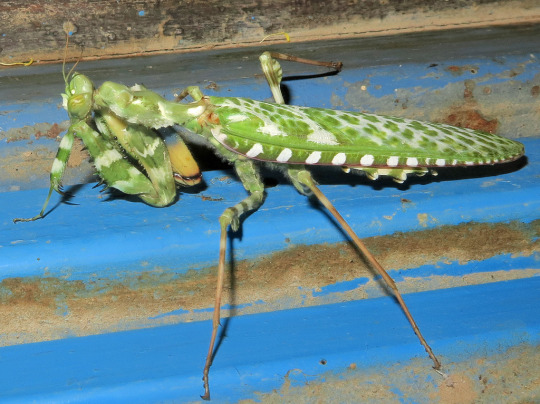
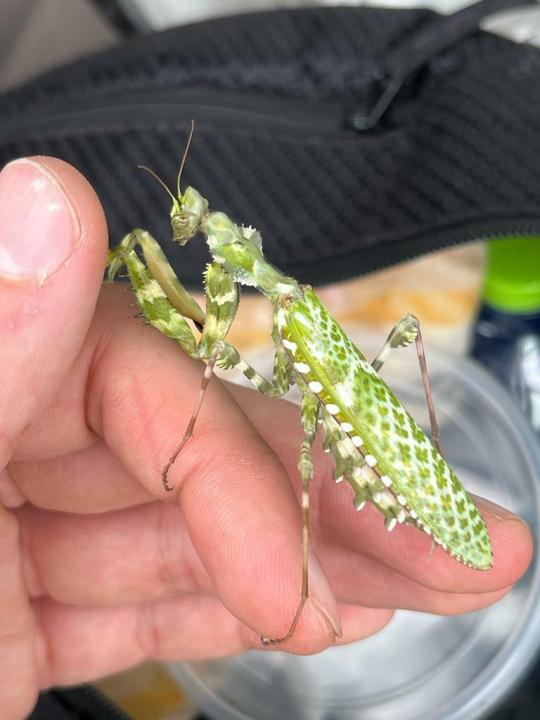
Thistle mantis, Blepharopsis mendica, Empusidae (Gargoyle Mantises)
Found across northern Africa, through the Middle East, and into Central and South Asia
Photos 1-2 by akkartrail, 3 by maylandia-curtis, 4 by yakov_salaviz, 5-6 by sausubel, and 7 (for scale) by noahm7
#animals#curators on tumblr#insects#bugs#mantis#mantid#praying mantis#thistle mantis#gargoyle mantis#one nice bug#camouflage
3K notes
·
View notes
Text
Today is Erev Yom Ha'Shoah (Eve of Holocaust Memorial Day) in Israel. It will be observed by Jews outside of Israel, too.

The Hebrew date was chosen to honor the outbreak of the Warsaw Ghetto Uprising. It's also a week before Erev Yom Ha'Zikaron Le'Chalalei Ma'archot Yisrael (Eve of Israel's Memorial Day for its Fallen Soldiers and Terror Victims), which is itself observed a day before Yom Ha'Atzmaut Le'Yisrael (Israel's Independence Day). A lot of people have remarked on the connection between the three dates. On Yom Ha'Atzmaut, we celebrate our independence, which allows us to determine our own fate, and defend ourselves without being dependent on anyone else, right after we remember the price in human life that we have paid and continue to pay for this independence, and a week before we mourn the price we've had to pay for not getting to have self defence during the Holocaust. NEVER FORGET that in one Nazi shooting pit alone (out of almost two thousand) during just 2 days (Erev Yom Kippur and Yom Kippur 1941), more Jewish men, women and kids were slaughtered than in the 77 years since Israel's Independence War was started by the Arabs. This unbreakable connection between the living and the dead, between our joy and our grief, is often addressed with the Hebrew phrase, במותם ציוו לנו את החיים, "With their death, they ordered us to live."

On this Erev Yom Ha'Shoah, I'd like to share with you some data, published on Thursday by Israel's Central Bureau for Statistics (source in Hebrew).
The number of Jews worldwide is 15.7 million, still lower than it was in 1939, before the Holocaust, 85 years ago (that is what a genocide looks like demographically).
7.1 million Jews live in Israel (45% of world Jewry)
6.3 million Jews live in the US (40% of world Jewry)
Here's the data for the top 9 Jewish communities in the world:
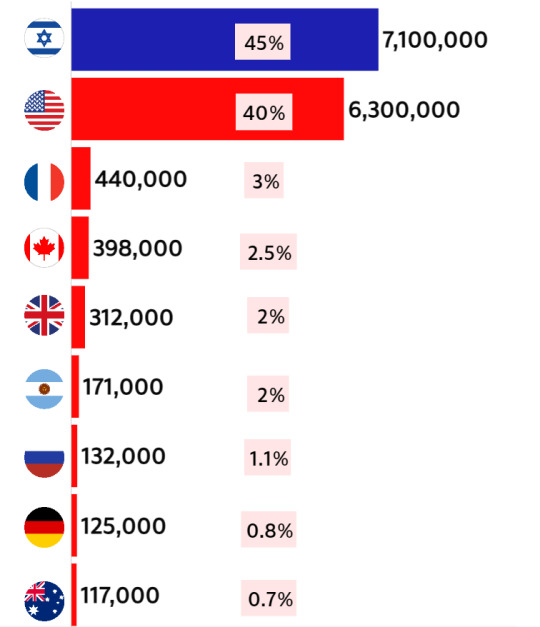
There are about 133,000 Holocaust survivors currently living in Israel. Most (80%) live in big cities in central Israel. Around 1,500 are still evacuated from their homes in northern and southern Israel due to the war (back in January, on International Holocaust Remembrance Day, there was a report about 1,894 survivors who also became internal refugees due to the war. Source in Hebrew). One Holocaust survivor, 86 years old Shlomo Mansour, is still held hostage in Gaza. He survived the Farhud in Iraq.

I haven't seen any official number for how many survivors had been slaughtered as a part of Hamas' massacre, despite everyone here being aware that Holocaust survivors had been murdered on Oct 7, such as 91 years old Moshe Ridler. Maybe, as we're still discovering that some people thought to have been kidnapped during the massacre, were actually killed on that day, no one wants to give a "final" number while Shlomo has not yet been returned alive.

Out of all Israeli Holocaust survivors, 61.1% were born in Europe (35.8% in the countries of the former Soviet Union, 10.8% in Romania, 4.9% in Poland, 2.9% in Bulgaria, 1.5% in Germany and Austria, 1.3% in Hungary, 4.2% in the rest of Europe), 36.6% were born in Asia or Africa (16.5% in Morocco, 10.9% in Iraq, 4% in Tunisia, 2.6% in Libya, 2.1% in Algeria, 0.5% in other Asian and African countries) and 2.3% were born elsewhere.

Out of all Holocaust survivors in Israel, 6.2% managed to make it here before the establishment of the state, despite the British Mandate's immigration policy against it (up until May 13, 1948). 30.5% made it to Israel during its very first years (May 14, 1948 until 1951), another 29.8% arrived in the following decades (1952-1989), and 33.5% made Aliyah once the Soviet Union collapsed, and Jewish immigration to the west (which included Israel) was no longer prohibited by the Soviet regimes (1990 on).
The second biggest community of survivors in the world is in the US, the third biggest (but second biggest relative to the size of the population) is in Australia. I heard from many Holocaust survivors who chose to immigrate there that they wanted to get "as physically far away from Europe as possible."
For a few years now, there's been this project in Israel, called Maalim Zikaron, מעלים זיכרון (uploading memory. Here's the project's site in Hebrew. In English it's called Sharing Memories, and here's the English version of the site) where Israeli celebs are asked to meet up with a Holocaust survivor (it's done in Hebrew), and share the survivor's story and the meeting on their social media on Erev Yom Ha'Shoah (which is today). Each year, there's also one non-Israeli Jewish celeb asked to participate (in English. This time around it's Michael Rapaport, he's meeting Aliza, an 81 years old survivor from the Netherlands, who was hidden along with 9 other Jewish babies for two years. He uploaded a preview of his meeting with her here, where he asked her what it means to her to be a Jew, and from what I understand, he will upload more today to the same IG account). This year, there will be an emphasis on Holocaust survivors who also survived Oct 7 (with 6 of the 20 participating survivors having survived Hamas as well). Here's a small bit from an interview with one such survivor, 90 years old Daniel Luz from kibbutz Be'eri:
(for all of my updates and ask replies regarding Israel, click here)
#israel#antisemitism#israeli#israel news#israel under attack#israel under fire#terrorism#anti terrorism#hamas#antisemitic#antisemites#jews#jew#judaism#jumblr#frumblr#jewish#israelunderattack#shoah#holocaust
458 notes
·
View notes
Text
Reblog for a bigger audience!
#splatoon#splatoon 3#splatoon 2#polls#splatoon polls#survey#splatoon survey#demographics#demographic poll
151 notes
·
View notes
Text
Moth Of The Day #182
Feathered Gothic
Tholera decimalis
From the noctuidae family. They have wingspan of 32-48 mm. They inhabit rough grassland, including downland, woodland rides and edges, parks and some gardens. They are found in Europe, Scandinavia, Central Asia and Northern Africa.

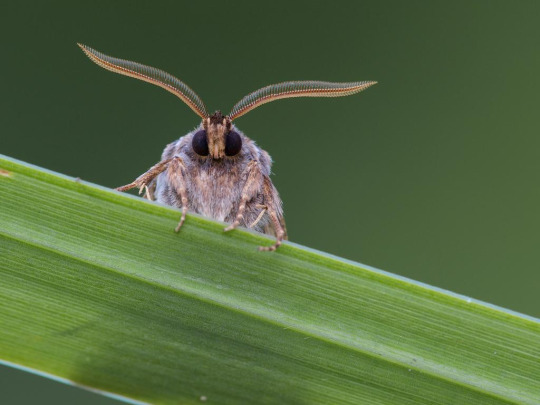
[Images source]
#moth#moths#lepidopterology#lepidoptera#nature#pretty moth#insect#bugs#moth of the day#motd#lepidoptery#entomology#bug#insects#feathered gothic#feathered gothic moth#tholera decimalis#noctuidae#noctuidae moth#invertebrates
270 notes
·
View notes
Text

The European bee-eater is a near passerine bird in the bee-eater family, Meropidae. It breeds in southern and central Europe, northern and southern Africa, and western Asia. Except for the resident southern African population, the species is strongly migratory, wintering in tropical Africa. Wikipedia
163 notes
·
View notes
Text
out of curiosity...
91 notes
·
View notes
Text

Wels Catfish (Silurus glanis)
Habitat & Distribution
The wels catfish is a freshwater fish, residing in lakes and slow-moving rivers
Native from eastern Europe to central Asia, and has been introduced to some parts of north Africa and the Amazon Rainforest of South America
Physical Description
Weight: 15 to 20 kg (33 to 44 lb) on average, 200 kg (440 lb) at maximum
Length: 1.3–1.6 m (4 ft 3 in – 5 ft 3 in) on average, 3 m (9.8 ft) at maximum
Wels catfish are long and thick, with a relatively smooth body and long fins that extend down the sides to the tail
They are characterized by two long barbels extending from the upper jaw, which act as sensory organs
Behaviour
Wels catfish are bottom-feeders, feeding primarily on worms, mollusks, insects, crustaceans and fish; larger specimins may also hunt frogs, snakes, rats, and aquatic birds
They are mainly ambush predators, but may use their large tails to stir up muck to disorient their prey
Humans are the only natural predators of wels catfish, though northern pike may feed on juveniles
Key Advantages
Wels catfish are very strong swimmers
They can create a powerful vacuum with their mouths to suck in potential prey
See where they stand in the May Mammal Madness Tournament here!
Photo by Filip Staes
108 notes
·
View notes
Text
Animal of the Day!
Eurasian Aurochs (Bos primigenius)

(Photo from Britannica)
Extinction Date- 1627
Habitat- Europe; Northern Africa; Central Asia
Size (Weight/Length)- 1,000 kg; 1.8 m tall
Diet- Grasses; Nuts; Leaves
Cool Facts- The Eurasian aurochs was a majestic species of megafauna cattle that lived throughout the Pleistocene. Aurochs were believed to live in small herds and have a similar hierarchy to their current descendents of domesticated cattle. Due to their massive size, Eurasian aurochs had little to fear outside of prides of lions or large tigers. Their cultural significance travels throughout the Neolithic peoples of Asia, Africa, and Europe. Aurochs were favored creatures for cave paintings and fights in the Roman Colosseum. Domestication of aurochs began in the Fertile Crescent when humans began civilization. Unfortunately, Eurasian aurochs were driven to extinction by over-hunting and a quickly transforming landscape that resulted in the death of many megafauna species. Today, their closest relative is the rare, Spanish Pajuna cattle.
Rating- 12/10 (The loss of prehistoric landscapes resulted in the loss of megafauna worldwide.)
#animal of the day#animals#mammals#megafauna#Pleistocene#sunday#october 1#eurasian aurochs#aurochs#biology#science#conservation#the more you know#extinct#skeleton#fossil#but not really#subfossil#extinctober#pajuna cattle
327 notes
·
View notes
Note
Where do you reside in?
Options:
North America
Central/ South America/ Caribbean
Western Europe
Eastern Europe
North Africa
Sub-Saharan Africa
Northern Asia
Central/ Western/ Southern Asia
Eastern/ Southeastern Asia
Oceania
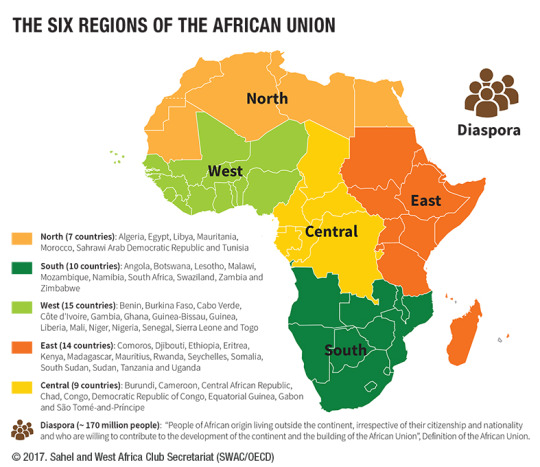
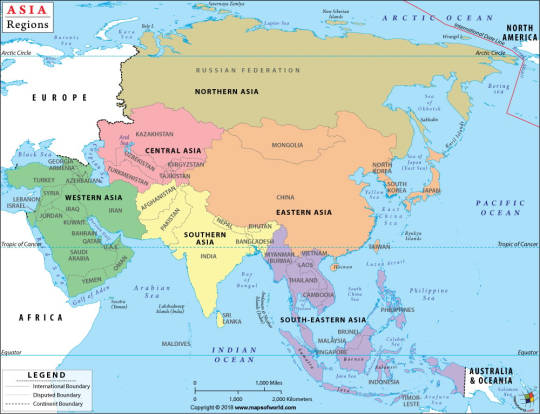
Here is the second part of this poll, with more specific regions of Europe.
And here's a master poll with US states.
Use 🫘/☕️/🌶 and so on, if you'd like to share your answer in the tags.
Tag / comment your country and reblog for a bigger sample size! 🇦🇹 🇧🇼 🇨🇺 🇧🇷 🇫🇰 🇮🇳 🇮🇸
#tumbler polls#tumblr polls#Europe#Asia#Africa#Oceania#America#demographic polls#countries#geography
184 notes
·
View notes
Text
Curious to see where people are from! I split it up as fairly as I could, given the number of poll options. Vote for the one that most closely relates to your location.
Please spread for sample size! I'd love to see this reach outside my bubble!
272 notes
·
View notes
Text
Please note that the families listed here were chosen purely by number of speakers, as those would be the most likely to be spoken. There are still MANY more language families not listed
Some of these have over a thousand languages so I cant list all of them, but I'll list a few languages from each family and the generam geography of it under the cut
Austronesian
Languages spoken mostly in Southeast Asian archipeligos including Indonesian, Malay, Javanese (NOT Japanese), and Tagalog, among others
Sino-Tibetian
Languages spoken mostly arround East and Southeast Asia along with some parts of Central Asia including Chinese (all dialects), Burmese, Tibetic languages, and Nepali, among others
Indo-European
Languages spoken mostly around Europe and South-Southwest Asia including English, all romance languages, Greek, Albanian, German, Hindi, Bengali, and Sanskrit, among others
Afro-Asiatic
Languages spoken mostly around Northern ans Northeaster Africa, and West Asia including Egyptian, Hebrew, Arabic, Amharic, and Hausa, among others
Fun fact! When counted as a single language, Arabic alone is spoken by over half of the native speakers of Afro-Asiatic languages
Atlantic-Congo
Languages spanning most of Africa exclusing Northern parts including Fula, Wolof, Swahilli, Kirundi, Luhya, Makua, Xhosa, and Shona languages, among others
Fun fact! This family has the most languages of any language family at 1,453 total!
Dravidian
Languages spoken mostly in souther India, along with surrounding countries, including Telugu, Tamil, Kannada, Malayalam, and Brahui, among others
Turkic
Languages spoken in many countries throughout (mostly central/centeal western) Asia and Eastern Europe including Turkish, Azerbaijani, Uzbek, Uyghur, and Kazakh, among others
Fun fact! While we mostly think of Turkic languahes being from Eastern Europe and Central Asia, Proto-Turkic actually originates from East Asia around China and Mongolia! It's seldom spoken there anymore
Japonic
Languages spoken mostly in Japan (Note: NOT including the Ainu languages) including Japanese, Ryukyuan, and Hachijō, among others
Fun fact! Japanese was considered an isolate language (a language with no other languages in its family) until the Ryukyuan languages joined it in the Japonic family.
It also has the lowest number of languages of the ones listed, with 13 languages.
Should Koreanic have made it onto the list (It was JUST bekow Kra-Dai for # of speakers), that would be the lowest with only 2 languages!
Austroasiatic
Languages spoken mostly around South through East Asia Including Vietnamese, Khmer, Tagalog, among others
Fun fact! Two-thirds of people who speak an Austroasiatic language speak Vietnamese
Kra-Dai
Languages spoken mostly in Southeast Asia and Southern China including Thai, Lao, Bê, among others
#I spent an unreasonable amount of time on this#I KNOWWWW this poll is gonna be dominayed bt indo-european but
48 notes
·
View notes
Text
PS: I am like super bad in geography ok. I can't even navigate my own ass back to home ʕ´•ᴥ•`ʔσ”
Please reblog to add more result for: #North Asia, #East Asia, #Africa, #Middle East #Australia #other parts of world that my polls can't show
The polls options hit max ʕ´•ᴥ•`ʔ sorry
Also if you want, tag your fave character too + where you come from! ❤❤
#hetalia#hws#geography#aph#hws china#hws japan#hws turkey#hws france#hws england#hws russia#hws nordic
102 notes
·
View notes
Text
Moth of the Week
Crimson-Speckled Moth
Utetheisa pulchella
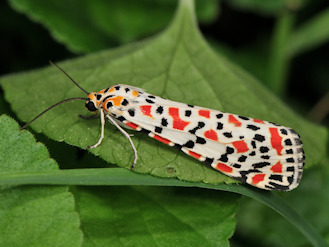
The crimson-speckled moth is a part of the family Erebidae. This species was first described in 1758 by Carl Linnaeus. It is also called the crimson-speckled flunkey and crimson-speckled footman.
Description The forewings are white or cream with red spots broken up by smaller black spots. Black dots also line the lower edge of the forewing called the outer margin. The pattern of spots may vary and the red splotches can merge into lines across the wings. The hindwings are much blander, they are all white except for a waved black/dark brown edge on the bottom of the hindwing, also called the outer margin, and a mark of the same color in the middle of the hindwing.
The head and back of the thorax is spotted buff yellow and black while the abdomen is only white or cream to match the wings. The moth’s legs are white and its antennae are dark brown/black and filiform.
These colors warn predators that this species is toxic.
Wingspan Range: 29 – 42 mm (≈1.14 - 1.7 in)
Diet and Habitat The caterpillars eat forget-me-nots, starflower, ribwort plantain, and plants from the genuses Echium, Solanum, and Anchusa. In their Afrotropical range they feed on Northern bluebell and plants in the genuses Lithospermum, Heliotropium, Trichodesma and Gossypium.
These plants contain alkaloids which makes the caterpillars and adult moths toxic to predators.
This species has a large range and are native to the Afrotropics, North Africa, the Near East, and Central Asia. This species also migrates to the United Kingdom, though its patterns are defined as “sporadic.”
These moths inhabit dry open places, meadows, shrublands, grasslands, and parks.
Mating This species has multiple generations a year: the broods are “continuous” in the tropics while elsewhere they have 3 per year.
Predators These moths fly both during the day and night. They have no camouflage but instead their colors advertise to predators that they are unpalatable. The plants they eat as caterpillars contain alkaloids which make them toxic to birds and other animals.
Fun Fact The crimson-speckled moth has 5 subspecies: Utetheisa pulchella antennata, Utetheisa pulchella completa, Utetheisa pulchella dilutior, Utetheisa pulchella kallima, and Utetheisa pulchella pulchella.
(Source: Wikipedia, Butterfly Conservation)
#libraryofmoths#animals#bugs#facts#insects#moth#mothoftheweek#lepidoptera#Erebidae#Utetheisa pulchella#crimson-speckled flunkey#crimson-speckled footman#crimson-speckled moth
100 notes
·
View notes
Text
One “conspiracy theory” I find very likely, and under-researched, is the idea that the search for the Abominable Snowman and Yeti in the Himalayas was actually a cover for Western intelligence operations in Central Asia.

Colin Dickey is the best known proponent of this in his cultural histories. The high point of all of this was the 1950s-60s, when everyone was searching for the Abominable Snowman, numerous movies were made on the subject, and most notably of all, Time Magazine put out an expedition to find the Abominable Snowman run by Tom Slick and Colin Byrne. Both Byrne and Slick have numerous CIA connections and on occasion, operated as intelligence agents openly. For example, Colin Byrne – literally the leader of the Life magazine Snowman expedition – was a spearhead in the 1959 CIA plan to extract the 14th Dalai Lama from Tibet to India.

As for the reason for all this, you have to remember that going back to the time of Rudyard Kipling and Mark Chapman, the whole logic behind the “Great Game” of spies between Britain and Russia in the Northern India and Afghanistan….if “logic” is really the right word to use in this instance, to refer to the jittery thinking of paranoid empires….is that sea-based powers like Britain was (and like the US is) cannot really counter land powers with large land routes in Central Asia, like Russia and China. China’s Central Asian autonomous regions, for instance, despite being landlocked, inaccessible and utterly unassailable, were always seen by Western intelligence as the weakest part of the Chinese empire and the easiest to peel off. Especially since they were often abandoned by the Central government to Warlord rule (notably, Western China was mainly ruled by the Ma Clan of Muslim Chinese Warlords in the Republican era). Not to mention the fact the region was a war hotspot, with numerous border conflicts of the 1950s that the nascent People’s Republic fought against India and Russia, which are often not well reported or even known in the West. In Kissinger’s book, he remembers being asked by the Soviets, as a kind of what-if, what the US would do if the Soviets were to bomb the Chinese atomic production facilities at Lop Nor (Kissinger dissuaded them).

I do remember reading an absolutely jaw dropping detail that I haven’t been able to confirm anywhere else in a history of the Russian war in Afghanistan: during the 1980s, most Soviet/Afghan war intelligence was relayed by a US intelligence base and listening post in Xinjiang. Boy, I bet the CIA still wishes they had that!
It is also true that the search for prehistoric wild men in Central Asia, despite being mostly based on dubious tall tales from oxygen deprived mountain climbers, was related to “scientific racism.” Specifically, the outdated scientific belief that different human physical/racial types evolved independently from Homo Erectus outside of Africa, have completely different intermediate lineages, and are borderline separate species. Now, if you were to find semi-humans in Asia walking erect and more like men than apes, it would absolutely clinch the idea of the independent evolution of different human types, who had different intermediate stages. Hence, Carelton S. Coon, the founder of scientific racism in the US who argued different races were separate species, was actually invited to the Byrne/Slick expedition of 1954. Coon, despite being the literal President of the American Association of Anthropologists, always had a chapter in all of his books arguing for the existence of prehistoric wild men like Bigfoot and the Yeti.

To be clear, all of this does not mean that there is no Yeti, however, the search for it in the West is intimately intertwined with intelligence services that use it as a cover, and racists who are hyper invested in them as it proves their scientifically discredited pet theories. It goes to show that the search for the Yeti is only the visible iceberg tip breaking the surface of a larger story, one of empires and politics in Central Asia.
990 notes
·
View notes